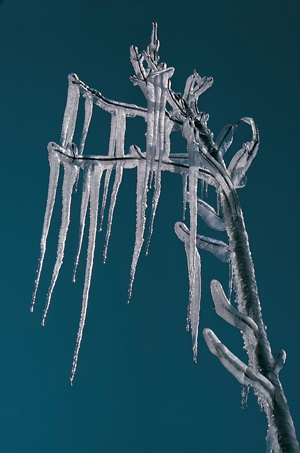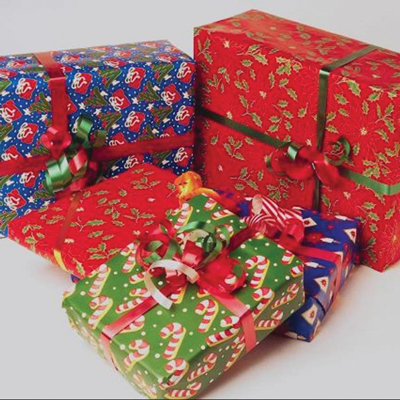
IT’S WINTER-HERE ARE SOME SAFETY AND INSURANCE TIPS:
BY ALAN PLAFKER, PRESIDENT & CEO
MEMBER BROKERAGE SERVICE LLC
A MELROSE CREDIT UNION SERVICE ORGANIZATION

Pay special attention to fire safety
December, January and February are the leading months for home fires and fire deaths in the U.S. On average, more than one-third of home fire deaths in the United States occur during the winter months. Here are tips to help you protect your family and your home.
How can I heat my home safely?
According to a report from the National Fire Prevention Association, heating equipment fires are the second leading cause of fire deaths in American homes and the biggest fire culprit December through February. According to the association most fires could be avoided by taking simple safety precautions.
Frozen pipes and other ice and snow damage
My pipes froze and burst damaging my home. Do I have coverage?
Most homeowners insurance policies, except for the very basic ones, cover damage to the home resulting from broken pipes. For example, your insurance company will pay to clean or replace the carpet and furniture that’s damaged, minus your deductible. For those with renters insurance property loss would be covered.
If the damage is so extensive that you can’t stay in the home your insurance company generally will pay for additional living expenses.
Am I also covered for snow and ice buildup that causes leaks in my roof?
This condition is known as an “ice dam.” To obtain coverage for this kind of leakage, not directly the result of damage to the roof by wind or the weight of snow, you would need an all-risks-not-excluded type of policy. It is often referred to as an HO-3 or special form policy.
How do I go about submitting a claim for such damages?
First, take immediate steps to prevent further damage and contact your insurance agency. Your coverage will be verified and you will be given instructions for preparing your claim.
Generally, you’ll be asked for repair estimates for structural damage and a list of items that will need repair or replacement. Depending on the amount of damage, an appraiser from your insurance company may need to see the damage. As with any insurance claim keep all receipts.
How can I prevent such damage in the first place?
Frozen pipes:
Snow and ice buildup:
Using a long handled snow puller pull the snow from the roof back just a few feet from the edge of the eaves before ice has a chance to form. By simply removing the snow along the edge of the roof you will give melting water a chance to drain from the eaves and prevent the formation of ice dams that may damage your roof. Do not get on the roof to remove snow buildup. This is dangerous and you could easily damage the roofing material resulting in leaks when it rains.
Your homeowners policy and storm damage—what’s covered?
Generally, how does my homeowners policy respond to storm damage to my property?
Your homeowners policy covers most losses that may occur to your dwelling and personal property. Commonly, losses resulting from theft, fire, wind, vehicles and vandalism are covered.
What if there is damage because of a storm?
A standard homeowners policy covers storm damage to the dwelling, its contents and other structures such as garages and fences up to the policy limit. Such damage also acts as a trigger for coverage of other consequential losses and expenses including removal of debris and loss of use.
What if my family and I cannot live in our home because of the damage?
When storm damages make it necessary to leave your home temporarily your home owners policy covers the additional costs necessary to maintain your normal standard of living for such things as meals, lodging, laundry, transportation, entertainment, etc. You will need to present receipts for all of your expenses to be reimbursed.
What clean up expenses can I expect to recover following a storm?
Your homeowners policy will cover costs for removal of debris when covered property is damaged. This includes the removal of trees that fall on covered structures, but this coverage for trees usually is limited to $1,000 for a single storm.
Am I covered for protecting my property from damage?
Your policy obligates you to protect your property from further damage following a loss as a condition to payment of your claim. You can expect your policy to pay for such expenses to board windows and make emergency repairs. Also, property removed from your home to protect it from an impending storm receives more comprehensive coverage than what is provided at your home for a limited period of time, it covers flood, earthquake and any direct damage to your dislocated property without exclusions. However, the expenses to remove the property from harm’s way is not a covered expense.
What damages are not covered by my homeowners policy?
Trees, shrubs and gardens damaged or destroyed by the storm are not covered. The spoilage of food due to an inoperative refrigerator or freezer resulting from an off-premise power outage is not covered by many policies unless the appliances are inoperative because the damage to power lines or other utility equipment occurred on your property; for example, lightning damage to your circuit box or a tree falling on power lines connected to your home.
It is important to note that there is no coverage for any damage that is a direct result of flood, surface water or water that backs up through sewers or drains that is caused by an act of nature (a storm).
How can I find out what is covered in my specific circumstances?
The information provided here includes general guidelines for storm damage coverage. You should contact your agency for definite answers and further advice.

Don’t be left out in the cold when it comes to your holiday gifts
New holiday treasures might need coverage
Once you have unwrapped all the holiday packages it will be up to you to protect your items. Do this by updating your household inventory to include the new electronics, jewelry, sports equipment and other big ticket items you may have received. And, before you send off your thank you notes, take pictures, record any serial numbers, and store them both in a safe place like a fire proof lock box or in your safe deposit box at your bank.
Are your holiday gifts covered?
Not necessarily. There may be limitations on the amount of insurance provided by your homeowners policy, especially for expensive gifts such as personal computers, silverware, stamp or coin collections, fine art and jewelry. There also may be limitations on the types of loss or damage that are covered such as breakage or flood. You can get additional coverage for these gifts. Look into personal property endorsements and floaters. With an endorsement you can specify a higher amount than under the standard homeowners policy. With a personal articles floater items such as jewelry can be covered at full value with no deductible based on current appraisal or the bill of sale. Floaters also can cover additional causes of loss such as dropping a new ring down the drain.
Most importantly, your agent can make sure you have the proper coverage on your homeowners or renters insurance policy. Remember some items such as fur coats, fine art and jewelry are not covered under a basic insurance policy and require an umbrella policy to protect your valuables if they are lost, damaged or stolen.
What’s involved in a home inventory?
A few hours of your time and a working camera or video recorder.
Update this inventory whenever needed. That’s all it takes for the peace of mind that comes with knowing that you are adequately covered.
For more information, talk to your insurance professional, or the author of this article.
Your Professional Insurance Agent…
We want you to know about the insurance you’re buying.
Alan Plafker is President of Member Brokerage Service LLC, a Melrose Credit Union Service Organization. He is a licensed Insurance Broker and serves as Treasurer on the Board of Directors of the PIANY (Professional Insurance Agents Association of NY), serves on the Board of CIBGNY (Council of Insurance Brokers of Greater NY), and was appointed to the New York Independent Livery Driver Benefit Fund Board of Directors. His Agency insures thousands of polices for TLC Insurance as well as many policies for all types of insurance. You can reach him in his Briarwood, Queens office at (718) 523-1300 ext. 1082, or visit the website at: www.MemberBrokerage.com